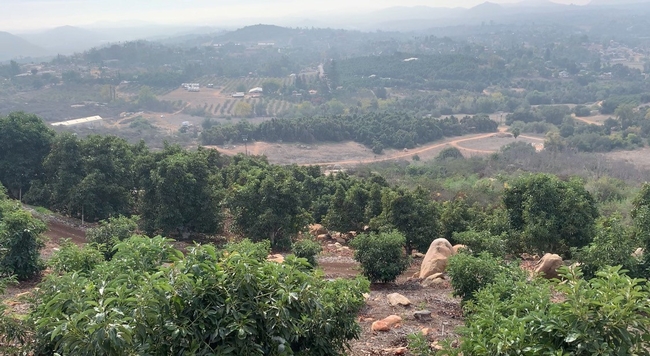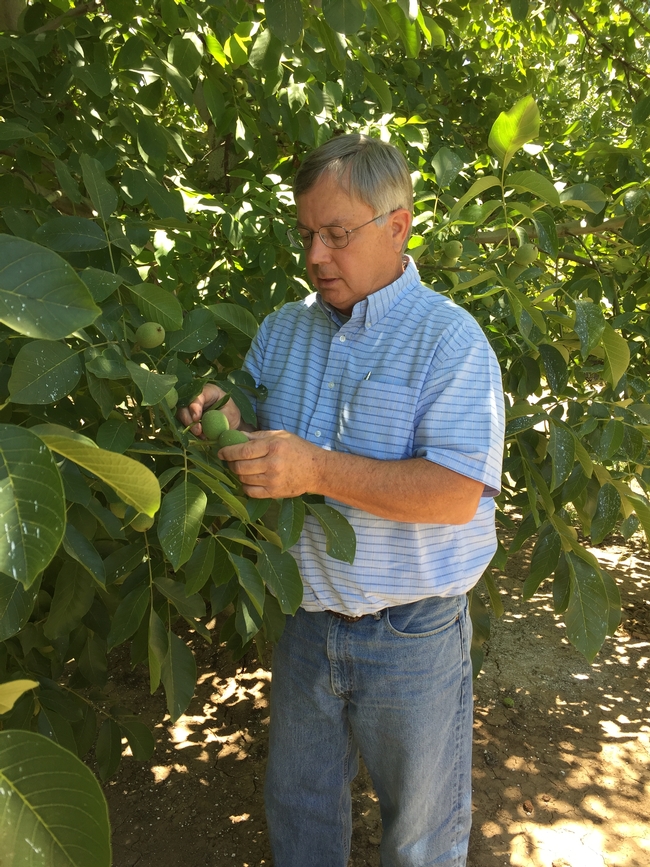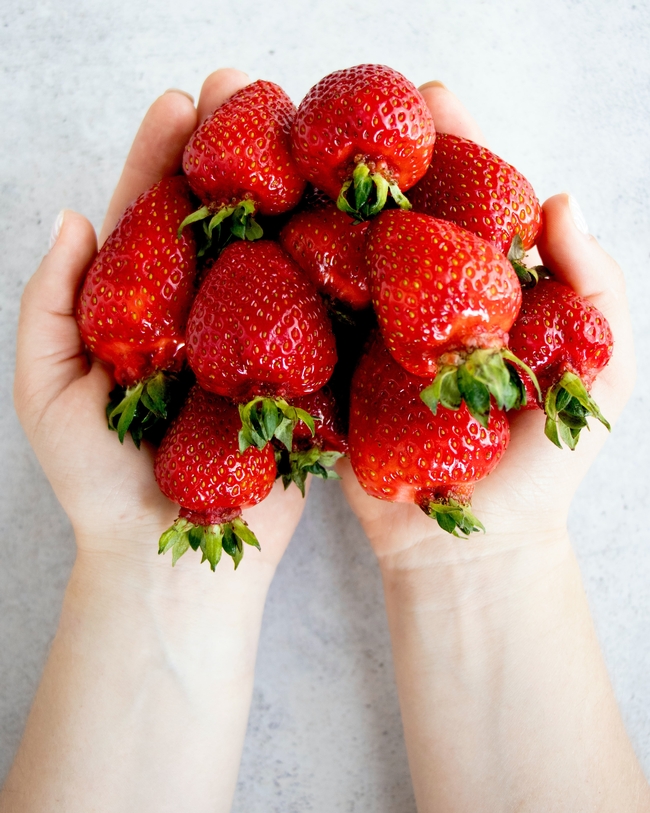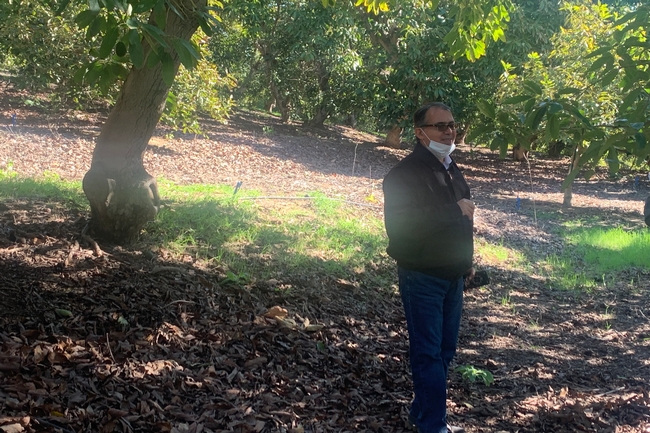Posts Tagged: grant
UC Davis awarded grant to advance strawberry breeding, genetic tools
The $6.2 million grant centers on protecting crops in the future
The federal government is awarding $6.2 million to University of California, Davis, to study how to use breeding and genetic information to protect strawberry crops from future diseases and pests.
The four-year grant from the National Institute of Food and Agriculture (NIFA) centers on addressing expanding and emerging threats to strawberries, a popular fruit packed with Vitamin C and key to the diets of many Americans.
Enhanced plant breeding, gene editing and other technologies will be key to ensuring strawberry crops are sustainable in the face of climate change and possible restrictions on chemical use, said Steve Knapp, director of the Strawberry Breeding Center and a distinguished professor in the Department of Plant Sciences.
“We need to have the technology so that we can deal with the challenges strawberries face around the world,” Knapp said. “Can we use genetic knowledge to change the DNA in a specific way to get the resistance we need?”
USDA funding
The grant award was one of 25 announced Oct. 5 by NIFA – an agency of the U.S. Department of Agriculture – as part of the Specialty Crop Research Initiative program, which addresses “key challenges of national, regional and multistate importance in sustaining all components of food and agriculture…,” the agency said.
The strawberry industry has lagged behind crops like tomato and wheat when it comes to genetic and technical innovation, Knapp said, and the grant signifies that “now they want the foot on the accelerator.”
A key priority is identifying whether changing DNA molecules can improve disease resistance and what technologies would be needed. Ensuring some genes are expressed while others are suppressed would be part of the analysis.
“We're trying to build in natural resistance to pathogens through the genes that already exist but could be modified with this knowledge,” Knapp said. “If we were able to edit a gene that improves disease resistance, people would want us to use that in breeding.”
The intent is to produce disease-resistant cultivars and identify better ways to diagnose, prevent and manage disease. The research project will also include an economic forecast evaluating the consequences of production changes and communicating with farmers about the laboratory advances, according to the grant proposal.
Gitta Coaker from plant pathology and Mitchell Feldmann, Marta Bjornson and Juan Debernardi from plant sciences are participating in the research, as are scientists from California Polytechnic State University, UC Agriculture and Natural Resources, UC Berkeley, University of Florida and USDA's Agricultural Research Service.
Avocado growers to get irrigation tools, strategies from UC ANR’s Montazar
CDFA grant supports research to optimize water use for iconic California crop
California growers, who account for more than 90% of avocado production in the U.S., will soon be getting some help in weathering the extreme fluctuations of climate change.
Ali Montazar, a University of California Cooperative Extension irrigation and water management advisor, recently received a grant to develop tools and strategies that optimize growers' irrigation practices across Southern California – the state's avocado belt. California avocados are valued at more than $411 million, according to the National Agricultural Statistics Service.
“This region faces uncertain water supplies, mandatory reductions of water use, and the rising cost of water – while efficient use of irrigation water is one of the highest conservation priorities,” Montazar said. “Water is the most critically important input to avocado production.”

At the California Avocado Commission's suggestion, Orange County was added to the study to better capture the range of climates and cropping systems across the region, Montazar said.
He hopes to develop “crop coefficients” that avocado growers can use to determine the optimal irrigation for their crop based on a host of factors: soil type and salinity, canopy features, row orientation, slopes, soil and water management practices, and more.
“Growers are unclear on how much water the crop actually needs under those conditions,” Montazar said.
He will incorporate data from the actual water use in the experimental orchards – including information from the newest soil moisture and canopy temperature sensors – to help ensure growers do not under- or overwater their crops. Overirrigating contributes to a devastating disease, avocado root rot, caused by the plant pathogen Phytophthora cinnamomi.
Another component of the grant supports outreach in disseminating these resources and best practices to the broader agricultural community.
“Developing and adopting these tools and information may have a significant impact on water quality and quantity issues and bolster the economic sustainability of avocado production not only in the well-established production region of Southern California, but also in Kern and Tulare counties where new avocado plantings are growing,” Montazar said.
Preliminary findings and recommendations are expected at the end of 2022.
UCCE San Joaquin County tree crop advisor Joe Grant retires

If there were a hall of fame for farm advisors, Joe Grant would be nominated by Brent Barton, a fourth-generation grower. Grant, a UC Cooperative Extension advisor who is known for his research on walnuts, cherries, apples, olives and other tree crops, retired July 1 after serving 30 years with UC Agriculture and Natural Resources, primarily in San Joaquin County.
“Joe Grant would be an inductee to a hall of fame because he is hardworking, persistent and takes a scientific approach to his work, but it's grounded in practicality, which farmers demand,” said Barton, who grows walnuts and oil olives.
The grower credits Grant with making pheromone mating-disruption an option for codling moth control, grower acceptance of a pressure bomb for optimal irrigation timing, rootstock research and use of cover crops in walnuts.

Because the codling moth biocontrol method reduced pesticide use, the California Department of Pesticide Regulation honored Grant and the Walnut Production Research Advisory Council Entomology Working Group with its IPM Innovator Award in 2013.
Grant is not only a trusted scientist, he's fun to work with, according to Barton, who explained that Grant puts on a gruff demeanor and grumbles, “What did you do that for?” in deadpan humor. “He rarely breaks, but sometimes you'll catch a twinkle in his eye.”
With the exception of 17 months in the 1980s when Grant took a temporary post in Madera County, he has devoted his entire career to San Joaquin County. In 1983, he began as a postgraduate researcher in pomology. After a year, he became a UC Cooperative Extension farm advisor intern, then served as acting UC Cooperative Extension pomology advisor in Madera County from November 1985 until March 1987. In April 1987, Grant accepted the job that he would hold for the next 29 years.
“I worked hard throughout my career to build and conduct a program that advanced knowledge, addressed the changing needs of my clientele, and provided service back to the University, ANR and the public,” said Grant, who earned master's degrees in pomology and plant protection and pest management at UC Davis.
In 1990, Grant created San Joaquin WEATHERNET, a network of automated weather stations in the principal tree and vine producing regions of San Joaquin County, and oversaw the operations.
Over the years, Grant conducted several walnut rootstock trials aimed at managing walnut blackline, Phytophthora root rot, crown rot and root lesion nematode, the principal causes of orchard decline in California orchards.
Improved rootstocks are becoming the foundation for more productive and sustainable orchards of the future, he said.
The UCCE advisor in California's leading cherry-producing county, he also studied rootstocks to plant in cherry orchards affected by Phytophthora and cherry stem pitting. Grant helped develop techniques for managing cherry buckskin disease, which once threatened the northern San Joaquin Valley's cherry industry. He also collaborated with researchers in other states to evaluate cherry rootstocks for shorter trees and tree-training systems for intensive “pedestrian” orchards, which workers on the ground can prune and harvest, and mechanically harvestable orchards.
To synchronize bloom, advance fruit maturity and harvest date, the UCCE advisor collaborated on development of treatments for cherries that are used in nearly all southern San Joaquin Valley cherry orchards and half of northern San Joaquin Valley orchards.

Grant also identified Gala apple strains adapted to warm San Joaquin Valley growing conditions. These have become the strains of choice for Gala apple growers.
In 2005, Grant was appointed to the California Walnut Board Production Research Advisory Council, charged with setting long-term plans for the walnut board's $1.6 million walnut research program. He served as chair of the select group of researchers, advisors and walnut industry representatives from 2008 to 2016. He was also UC's research liaison to the cherry industry from 2004 to 2016 and to the California Apple Commission from 2008 to 2012.
Other organizations and projects Grant has participated in include the Mid-Valley Apple Association, California Cherry Growers and Industries Foundation and the California Alliance with Family Farmers.
Grant has shared his expertise in tree crops as an invited speaker at conferences in Uzbekistan, China, Iraq, Chile, Australia and the Republic of Moldova.
In retirement, he will remain active in agriculture. UC Agriculture and Natural Resources has given Grant emeritus status and he has accepted a half-time position as research director for the California Walnut Board. For pleasure, he says, “I plan otherwise to spend more time getting to know my six grandchildren, doing a little hiking and biking, and learning to play a banjo that has been stored under the bed for the past 10 years or so.”
California cherry crop 'unusually light'

Joe Grant, UC Cooperative Extension advisor in San Joaquin County, said the cherry crop is light throughout the area, across orchards and varieties.
"That rules out orchard-to-orchard factors, management factors or disease factors," he said.
Crop losses are often weather-related, but early frosts, or wet or cold weather during the bloom were not factors.
"Right now, the only candidate ... is we had quite warm weather for a couple of days during bloom," Grant said. That heat may have affected pollination and reduced the amount of fruit each tree carries.
On the bright side, the fruit looks to be of good quality.
Northern San Joaquin Valley is basking in the cold

The consensus for this part of the state: cold weather is good news. The Stockton Record checked in with Joe Grant, UC Cooperative Extension advisor in San Joaquin County.
"We'll take any and all cold that we can at this time of year to fulfill the chilling requirements of the trees," Grant said.
Paul Verdegaal, UCCE advisor in San Joaquin County, a viticulture expert, agreed.
"The good side of the story is we're catching up on the chilling hours, which will produce a good strong bud bread and bloom for all the perennial crops," Verdegaal said. "(Subfreezing temperatures, however,) may be hurting some younger trees and vines, but generally, things are in dormancy, so it's not too much of a problem."
Maxwell Norton, UCCE advisor in Merced County, spoke to the Merced Sun-Star.
"For us out here, the cold nights are good," Norton said. "We fare quite well because we don't grow subtropical crops like citrus and avocados."
Scott Stoddard, UCCE advisor in Merced County, said crop storage facilities need to pay attention to temperature control when the weather gets very cold.
"We have a lot of sweet potatoes in storage," he said. "They guys need to make sure their storage rooms are working properly and don't get too cold."
Roger Duncan, UCCE advisor in Stanislaus County, told the Modesto Bee that warm winters are more harmful than cold snaps such as the one we're experiencing.
"Actually, this is beautiful," Duncan said. "Tree crops need cold in order to break their rest."

